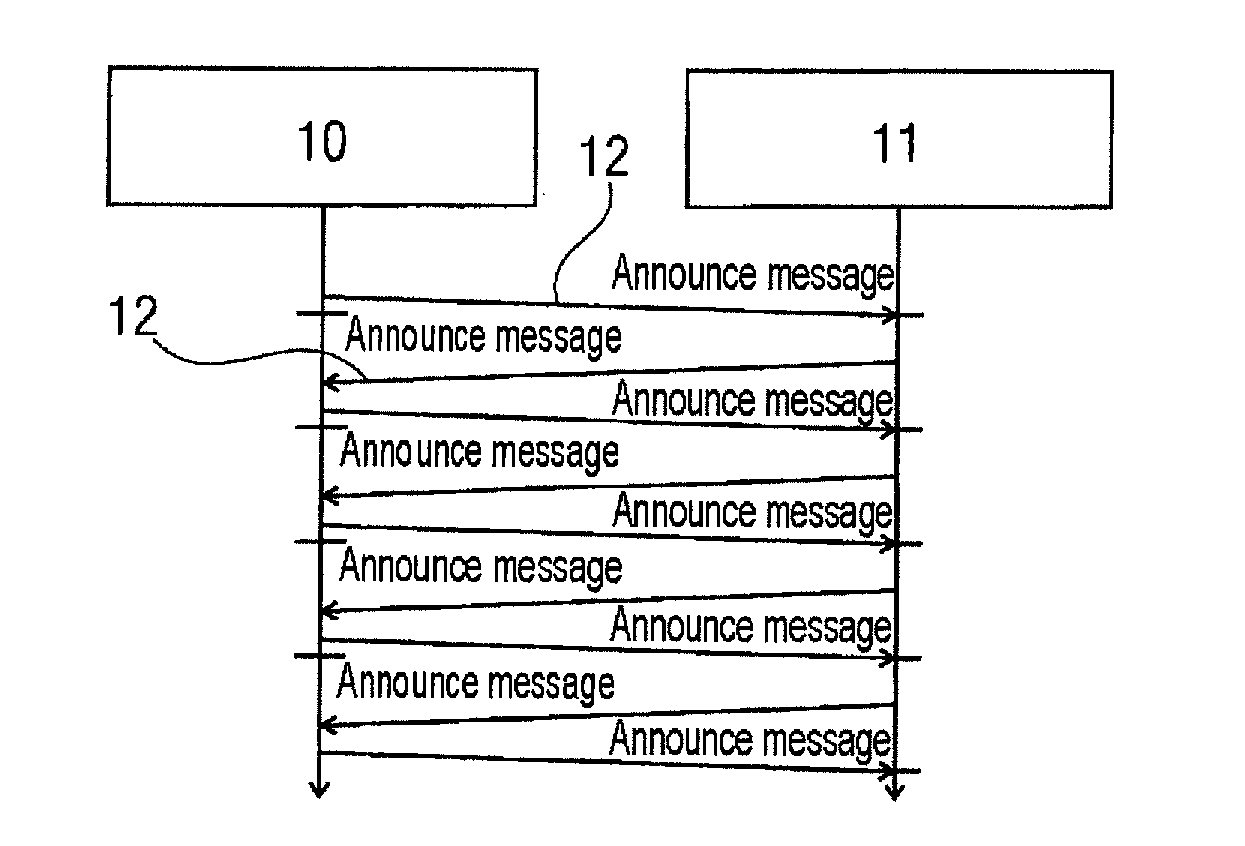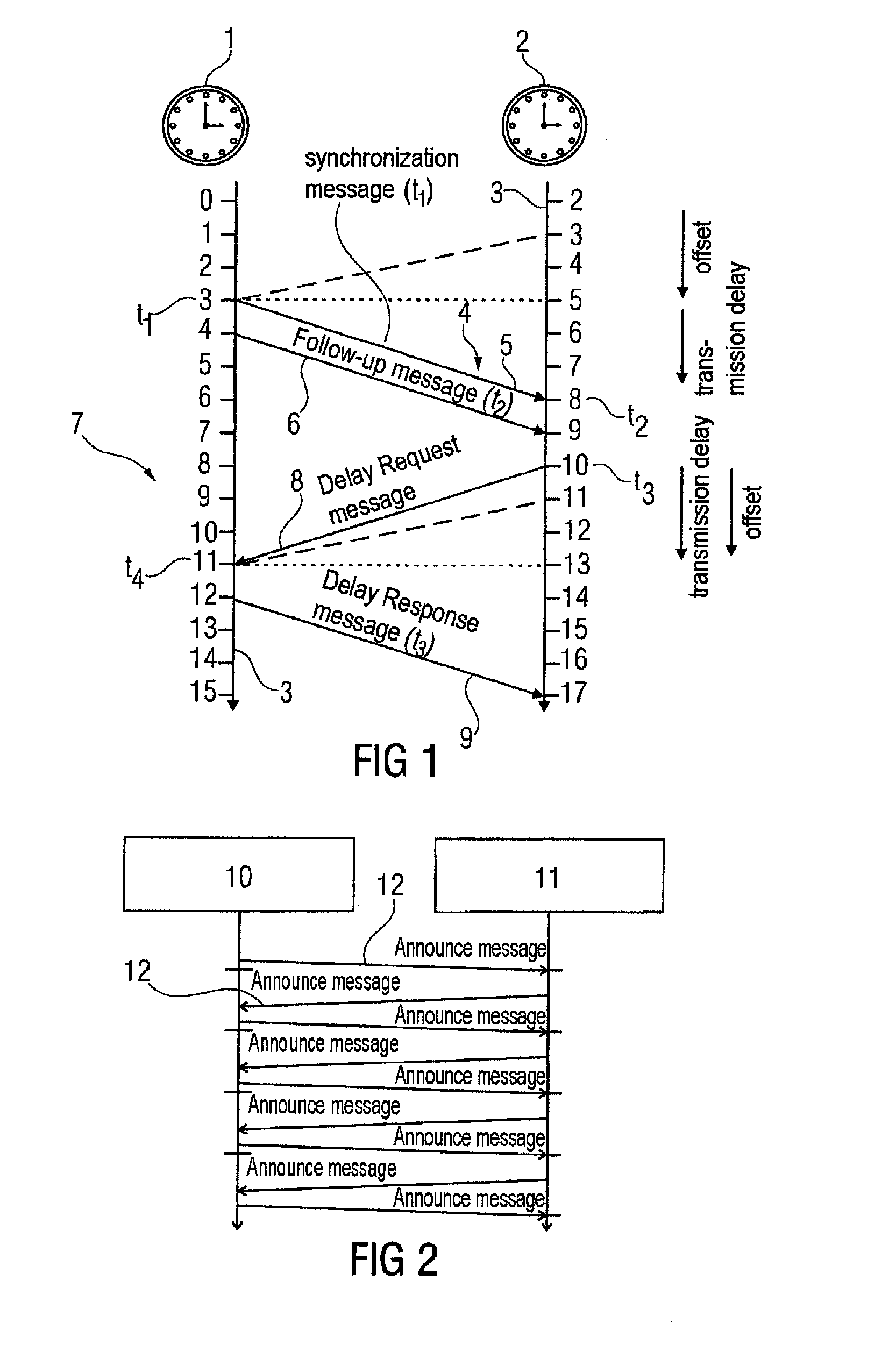Method for synchronizing clocks in nodes of a vehicle network and node designed to perform the method
a vehicle network and node technology, applied in the direction of data switching networks, synchronization signal speed/phase control, multiplex communication, etc., can solve the problems of inability to packet-switched data transmission, inability to optimize synchronization protocols for first-time synchronization during start-up (restart) of the network, and inability to achieve packet-switched data transmission. the effect of synchronization times
- Summary
- Abstract
- Description
- Claims
- Application Information
AI Technical Summary
Benefits of technology
Problems solved by technology
Method used
Image
Examples
Embodiment Construction
[0040]FIG. 1 shows a master clock 1 of a master node and a slave clock 2 of a slave node, each clock being assigned the time base 3, which is represented in FIG. 1 as a timeline extending in arbitrary units below the master clock 1 and the slave clock 2, respectively.
[0041]As part of the synchronization method proposed according to an exemplary embodiment of the invention in a vehicle network in which the nodes communicate with one another via a communications protocol that is not synchronized per se, it is provided that the master node having the master clock 1 sends out synchronization messages 4, which are received by the slave node having the slave clock 2. In the example shown, a synchronization message 4 is composed of two messages. The first message is what is known as a Sync message 5, which the master clock 1 sends out at a time t1, and which the slave clock 2 receives at a time t2. Since not all nodes are capable of incorporating the send time t1 of the Sync message 5 in t...
PUM
 Login to View More
Login to View More Abstract
Description
Claims
Application Information
 Login to View More
Login to View More - R&D
- Intellectual Property
- Life Sciences
- Materials
- Tech Scout
- Unparalleled Data Quality
- Higher Quality Content
- 60% Fewer Hallucinations
Browse by: Latest US Patents, China's latest patents, Technical Efficacy Thesaurus, Application Domain, Technology Topic, Popular Technical Reports.
© 2025 PatSnap. All rights reserved.Legal|Privacy policy|Modern Slavery Act Transparency Statement|Sitemap|About US| Contact US: help@patsnap.com



